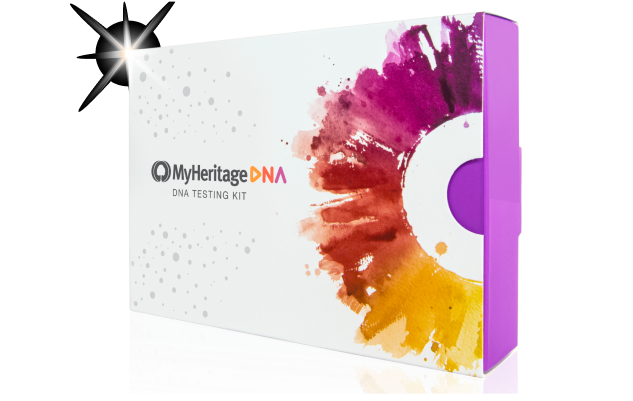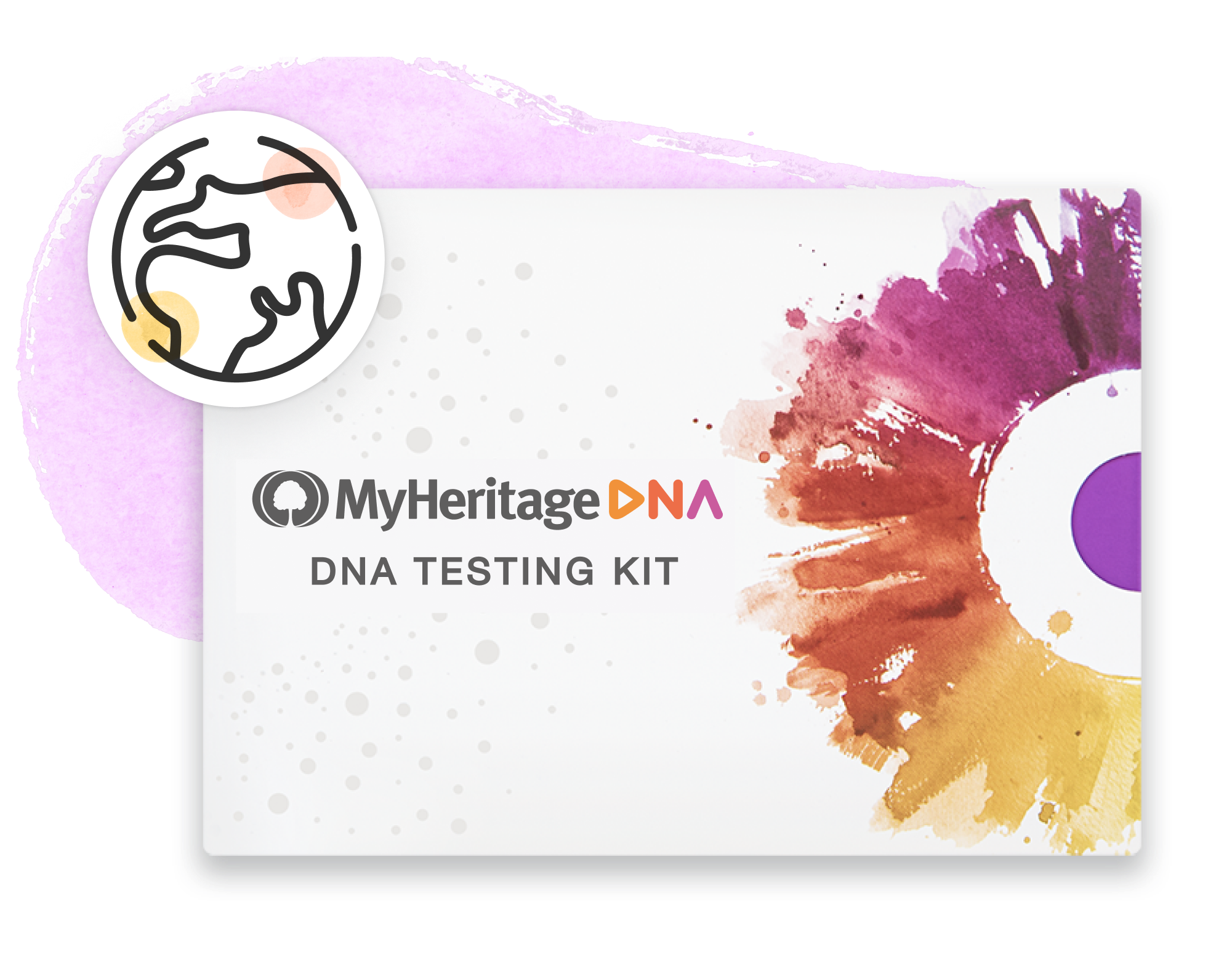
Autosomal DNA is a term used in genetic genealogy that refers to DNA inherited from autosomal chromosomes, known commonly as autosomes, and which encompass the numbered chromosomes and are distinct from the sex chromosomes. In humans, there are 22 pairs of autosomes and one pair of sex chromosomes housed within the cell's nucleus, consisting of the X chromosome and the Y chromosome. The autosomes are approximately numbered based on their sizes. For example, Chromosome 1 has approximately 2,800 genes, while Chromosome 22 has approximately 750 genes.[1] and which makes a total of about 20,000 genes.[2] During inheritance, an individual receives one set of autosomal chromosomes from their mother and a matching set from their father. As a result, each person acquires 50% of their autosomal DNA from each parent.
There is no established abbreviation for autosomal DNA: atDNA (more common) and auDNA are used. Autosomal DNA contains most of the code that makes an individual. By reading particular areas of this code, it is possible to find out specific details about the genetic history of the testee. Small variations in these genes determine the genetic makeup of a person and can be used to obtain medical information and discover the testee's ethnic heritage.[3]
Research your ancestors on MyHeritage
Accuracy of Autosomal DNA tests
Autosomal DNA tests, sometimes called SNP tests[4] are done by providing a sample of DNA, which can be from a cheek swab, spit, or blood depending on the testing company. Then, the provider analyzes the DNA sequence contained in the sample and matches the DNA data extracted to others who have submitted their DNA for testing; this implies that the larger a provider's DNA database, the more accurate the results will be, as the testing company has a larger pool of DNA for comparison.[2] These tests can confirm relationships accurately, particularly in cases of parent-child relationships[5] and connections up to the second cousin level. However, confirming the nature of any relationship beyond that level necessitates supplementary contextual details and genealogical information. For genealogical relationships between second cousins once removed and 5th cousins, a more careful approach is necessary, and data needs to be collected from multiple family members. For relationships at the 4th cousin once removed to 5th cousin level, it might be necessary to test 10 to 20 or more first and second cousins and see how much autosomal DNA they share with a potential 4th cousin once removed or a potential 5th cousin, in order to have sufficient data to generate a statistically significant average amount of autosomal DNA that is shared among the entire group, assuming that the population analyzed is non-endogamous. Genealogical relationships beyond the 5th cousin level of relationship are more difficult to prove with autosomal DNA testing and, as a general rule, these can only be approached using triangulation, which can be done by testing different cousins and second cousins.[5] In some cases, Y-DNA and mtDNA data may also be of help, despite the fact that these do not really capture the ancestral background of an individual as they represent only single ancestral lines.[4]
Autosomal DNA testing for family history research
Autosomal DNA testing has become a popular method used in genetic genealogy[4] to help identify ancestors within the most recent 5–7 generations of a family tree. Autosomal DNA tests can identify close relatives, spanning multiple generations, and reveal one's predominant ancestral heritage. These tests can be employed to identify genetic predispositions and discover familial connections. MyHeritage offers the autosomal DNA test as this type of test has the greatest value for genealogists. The MyHeritage DNA test is an autosomal DNA test for genetic genealogy that can discover unknown relatives by matching our DNA sequence to millions of people who either tested their DNA directly with MyHeritage, or uploaded their raw DNA data file from any of the providers whose format is supported. This test also provides an ethnicity estimate.
Autosomal DNA testing plan
For autosomal DNA testing, the oldest generations should be tested first, whenever possible - parents, grandparents, aunts, and uncles. By testing a child as well as their parents, it will be possible to determine which segments have been inherited from which parent, as well as to rule out coincidental (identical by state) DNA matches. A two-parent/child trio also provides the best results for the purposes of phasing and chromosome mapping and can help to identify false matches which are found in the child but not in either of the parents. If only one parent is available for testing, then both should be tested. It is also recommended to test siblings because each one inherits part of their parent's DNA that the other siblings do not carry.[3] After testing parents and siblings, the next priority should be to test other close relatives from first to third cousins to get the best representation across the family heritage. Experience suggests that the maximum return is obtained by testing second cousins; they share one set of great-grandparents, so when someone shares a DNA match with a second cousin, it might be possible to narrow down the DNA matches to that specific line.
See also
Explore more about autosomal DNA
- MyHeritage DNA test
- How Do I Trace My Maternal and Paternal Lineage with MyHeritage DNA? from the MyHeritage Knowledge Base
- Genetic Genealogy for Family History Researchers from the MyHeritage Knowledge Base
References
- ↑ Autosomal DNA. International Society of Genetic Genealogy Wiki
- ↑ 2.0 2.1 What Is Autosomal DNA and What Can Yours Tell You? Healthline
- ↑ 3.0 3.1 Covering Your Bases: Introduction to Autosomal DNA Coverage. Legacy Tree Genealogists
- ↑ 4.0 4.1 4.2 What is genetic ancestry testing? MedlinePlus
- ↑ 5.0 5.1 What Are Autosomal DNA Tests? WebMD


